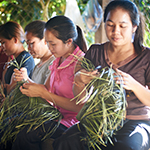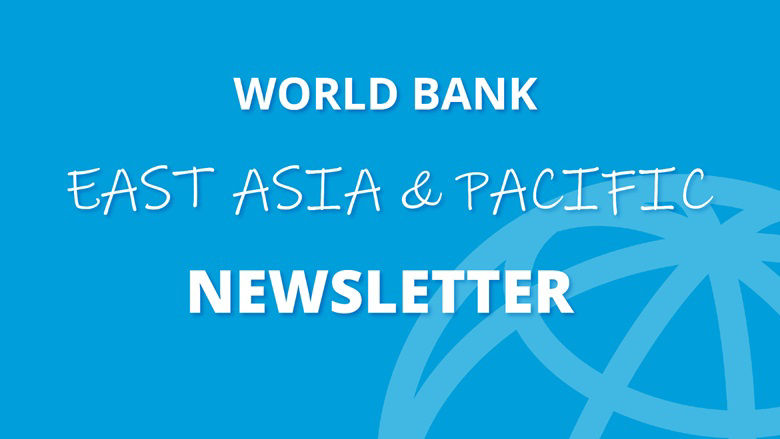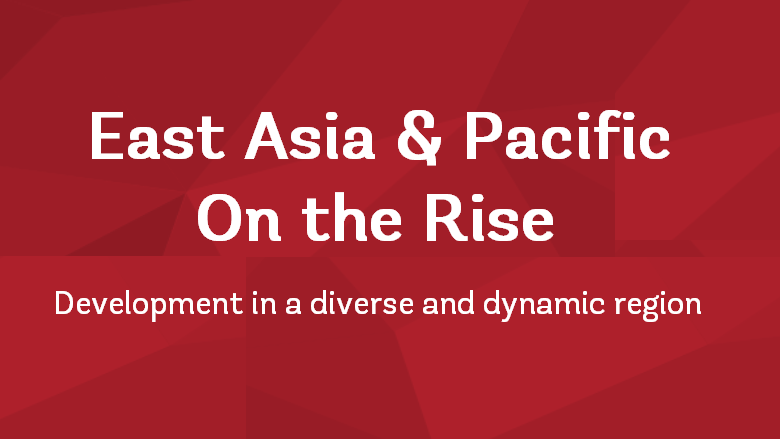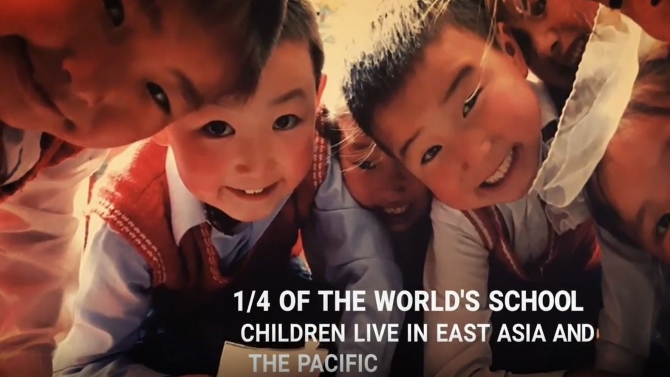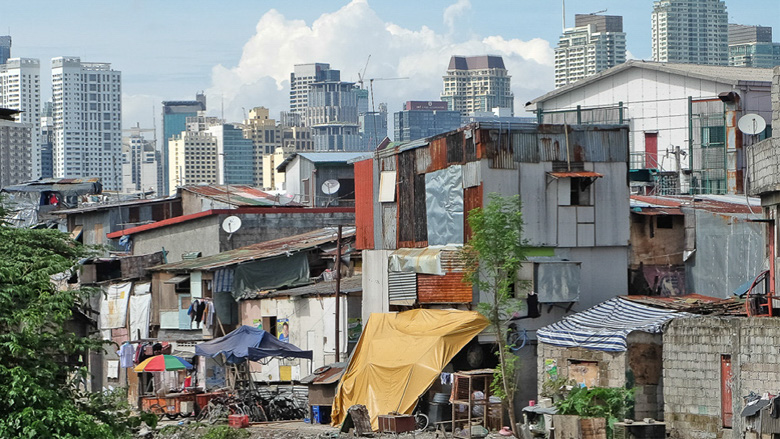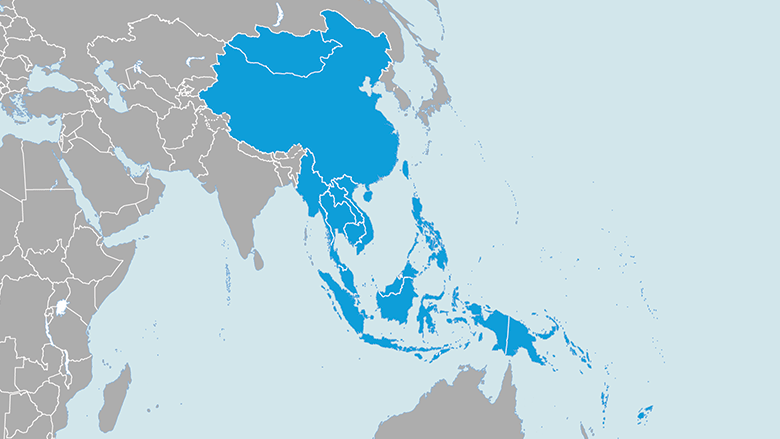People
World Bank support in East Asia and Pacific has delivered human capital, health and education and social benefits. For example:
World Bank support put East Asia and Pacific on a path to recovery from the COVID-19 Crisis. The World Bank mounted a swift and wide-ranging response, from emergency operations, approved under the COVID-19 fast-track facility for the purchase of medical and laboratory supplies, to training of medical staff, and strengthening national public health systems. The World Bank also worked with countries to redeploy existing project resources by reallocating funds, triggering emergency components of existing projects, and activating Catastrophe Deferred Drawdown Options.
In Viet Nam, private capital brought clean drinking water to schools and communities. Thanks to an Emission Reduction-Linked Bond issued by the World Bank, a Vietnamese company manufactured and distributed 300,000 easy-to-use water purifiers to 8,000 schools and other community institutions across the country for free, which will provide clean drinking water to up to 2 million children. The project is expected to reduce carbon dioxide (CO2) emissions by about 6 million tons in the decade following its initiation.
In Cambodia, with World Bank support, reforms improved education quality for half a million students. Students benefited from improvements to school operations, learning facilities, and teacher capacity. The project also formed the backbone of the country’s distance teaching and learning program or efforts during the school closures caused by the pandemic.
In Indonesia, the Investing in Nutrition and Early Years (INEY) Program informed and supported the National Strategy to Accelerate Stunting Prevention, which reduced the national stunting rate by 6.4 percentage points in its three years of implementation since 2018. This achievement involved collaboration among a range of ministries and government institutions, development partners, civil society, academia, professional organizations, and the private sector – all working together to bring nutrition services to millions of pregnant women and children under two across the country.
Prosperity
To boost shared prosperity in the region, World Bank support delivered jobs, domestic resource mobilization, financial inclusion, and economic policies. For example:
In the Pacific, the World Bank supported the improvement of ocean-based livelihoods. The Pacific Islands Regional Oceanscape Program helped the regional the regional body responsible for tuna fisheries management – the Pacific Islands Forum Fisheries Agency to provide training for regional fisheries observers, helping improve their safety, and building a better shoreside inspection regime.
In the Philippines, World Bank support helped reducing poverty and increase productivity and incomes among rural farmers and fisherfolk. The project provided about 372,000 farmers and fisherfolk with agricultural assets and services, 46 percent of whom were female. This support helped increase the average real household income of farming and fishing households by 36 percent and increased the value of their marketed output by 51 percent.
In Mongolia, World Bank support brought herders closer to markets and livestock services. Investments to improve livestock productivity and quality and boost market access helped reduce rural poverty and household food insecurity on a sustainable basis in Mongolia. Almost 14,000 people benefitted from the project, 40 percent of whom were female.
Planet
The World Bank supported efforts to mitigate and adapt to climate change, eliminate food insecurity, water, support forestry, and prevent biodiversity loss and soil degradation in the region. For example:
In Vietnam, the World Bank helped increase the low-carbon energy supply for people and businesses. The project enhanced capacity, increased efficiency, and reduced greenhouse gas emissions, while ensuring improved access to more reliable electricity services. The project increased transmission capacity by 15 percent and enhanced the efficiency and reliability of electricity transmission in the Greater Hanoi and Greater Ho Chi Minh City areas.
The World Bank supported Thailand’s climate goals through the a partnership for market readiness. The program supported Thailand to design and to deploy new carbon pricing instruments to effectively reduce the country’s greenhouse gas emissions. With the program’s backing, Thailand developed an Energy Performance Certificate database and a measuring, reporting and verification system to monitor the energy efficiency of commercial buildings and industries, to assess the legal framework for the Emissions Trading Scheme, and to develop greenhouse gas abatement plans for 25 municipalities.
In Solomon Islands, World Bank support helped rural communities build resilience to climate change. the Community Resilience to Climate and Disaster Risk in Solomon Islands Project supported the Solomon Islands government to deliver multi-hazard early warning systems and community infrastructure assistance. Projects provided better access to safe drinking water, created multi-purpose resilient buildings, improved footbridges and increased shoreline protection, benefitting almost 70,000 people.
Infrastructure
The World Bank helps developing countries build smart infrastructure that supports inclusive and sustainable growth, expands markets, creates job opportunities, promotes competition, and contributes to a cleaner future. Some examples in East Asia and Pacific:
In Indonesia, the National Slum Upgrading Project provided better public services to 8.6 million people. The NSUP rehabilitated tens of thousands of houses, thousands of kilometers roads, and bridges, drainage systems, and solid waste facilities. The project improved fire protection facilities, public open spaces, water supply and sanitation including solid waste facilities. It has also created task forces among local governments to coordinate slum alleviation activities.
In China, a World Bank-supported urban rail line delivered low-carbon mobility in a Chinese city. The Zhengzhou Urban Rail Line 3 provided fast, high-quality, and well-integrated mobility services to more than 140,000 passengers daily. The project is estimated to have mitigated 33,960 tons of CO2 emissions a year.
In the Philippines the World Bank-supported Global Infrastructure Facility piloted a public-private financing model for airport expansion and modernization. Under the project, upgrades to Clark International Airport quadrupled its capacity and reduced the strain off Ninoy Aquino International Airport, the country’s premiere gateway. The Global Infrastructure Facility provided funding to support IFC to conduct due diligence of the legal, technical, financial/commercial, and environmental and social issues of the project.
Digital
The World Bank provides knowledge and financing to help close the global digital divide, and make sure countries can take full advantage of the ongoing digital development revolution.
In Malaysia, a World Bank analysis digital connectivity, digital entrepreneurship, and taxation of digital platforms led to telecommunications regulatory reforms that have contributed to a 50 percent reduction in the costs of fixed broadband and the doubling of the doubling of speeds of internet connections.
The World Bank helped the Philippines harness digital technology. A study assesses the state of the digital economy in the Philippines, identifying the key challenges to digital adoption, and provided policy recommendations to improve the enabling environment. Recommendations led to streamlined guidance for the issuances of permits, licenses, and certificates for the construction of shared passive telecommunications towers, and ultimately, the issuance of certificates to 23 independent tower companies.
Last Updated: April 2024

